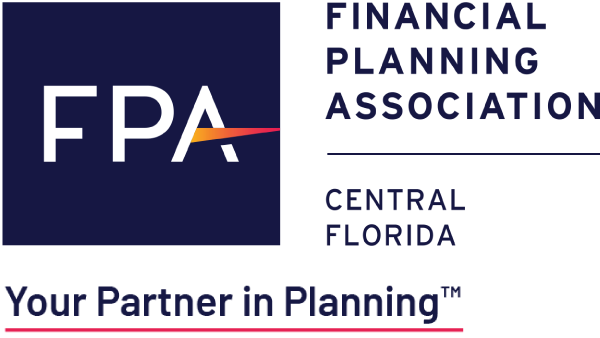
A Baker’s Dozen for the Bottom Line: 13 Financial Hacks to Save Time, Money and Hassle
 People are constantly looking for “hacks”: ways to improve their lives, to do more with less, to find new ways to gain and maintain an edge. It’s called progress, and it’s something human beings seemingly are wired to want and to seek.
People are constantly looking for “hacks”: ways to improve their lives, to do more with less, to find new ways to gain and maintain an edge. It’s called progress, and it’s something human beings seemingly are wired to want and to seek.
That’s especially true in the context of our financial lives. People are always seeking ways to improve their financial standing, now and in the future. The 13 financial hacks listed below include bypasses, shortcuts and other straightforward money-related maneuvers that can make a lasting positive impact on the financial bottom line, while saving time and hassle in the process.
HACK #1: Use a tax-favored 529 plan to pay for private high school, or even private elementary or middle school. As a result of newly instituted federal tax policy, tax-favored 529 educational savings plans aren’t just for college anymore. In addition to covering college expenses, beginning in 2018, money from 529 plans can be used to pay for up to $10,000 of tuition expenses per year, per student, for enrollment at an elementary or high school, notes Marguerita M. Cheng, CFP® of Blue Ocean Global Wealth in Gaithersburg, MD.
HACK #2: Use a tuition payment plan to help pay for a college education. As fast as the cost of a college education is escalating — four years at an out-of-state public college now cost an average of about $102,000 — many institutions offer students and their families interest-free payment plans to relieve some of the financial pressure. To find out if an institution offers such a plan, and if so, what the terms and enrollment cost are, contact the school’s financial aid office.
HACK #3: If you like to travel, get creative to manage your travel costs. Here’s a four-in-one financial hack to make travelling less expensive.
- Find ways to accumulate travel points or airline miles. There are ways to strategically and responsibly use a credit card to gain miles or points that defray the cost of air travel, lodging, rental cars and more. The important point here is to be sure to pay down card balances promptly. Otherwise the perks you stand to gain from using miles/points will be offset by higher interest charges on the credit card balances you’re carrying. Websites such as bankrate.com and www.nerdwallet.com offer comparisons and ratings of credit card rewards programs. They can also help you evaluate cards based not only on rewards but on the interest rate charged on purchases.
- When you rent a car, instead of paying the extra cost for insurance once you reach the counter, take advantage of the insurance protection that’s built into many credit cards. Before renting a car, first confirm that your credit card offers insurance on car rentals, then find out details on the extent of that coverage. If the card you use to rent a car does come with adequate coverage, then consider declining the extra coverage offered by the rental car company.
- Clear the cache of your Internet browser — Google Chrome, Firefox, Safari, etc. — when you’re shopping travel websites for a hotel, rental car or airfare. These sites have the ability to sift through the Internet search history stored in your browser’s cache, then adjust their prices higher, knowing you’re looking to make reservations for a certain destination on certain dates. They can’t do that, however, if your cache is empty. If you don’t know how to empty the cache associated with your browser, ask someone who’s tech savvy to show you how.
- If you have a specific place you want to visit, or you just want to travel someplace interesting and you’re willing to offer your home in trade to someone who’s interested in traveling to where you live, then consider arranging a home swap through a house-exchange website. Instead of paying for a hotel or a rental property, you stay in someone else’s home while they’re not there. In exchange, they get to use your home while you’re not there. Sometimes, the exchange involves a car, too. The only cost the participants pay is the fee charged by the website brokering the exchange, typically $100 to $150 annually. If you’re intrigued by the concept, check out sites such as HomeExchange.com and www.HomeLink.org.
HACK #4: Take video of the contents of your home for insurance purposes. Leon C. LaBrecque, CFP® head of LJPR Financial Advisors in Troy, MI, urges homeowners to keep an up-to-date photo or video inventory depicting the contents of their home as a way to accurately document and value the things they own, a necessity for homeowner’s (or renter’s) insurance. Keep images of every room in your home, plus the contents of closets, drawers, etc., along with details on when you bought specific items and how much you paid for them. Also keep images of electronic equipment (computers, televisions, stereo equipment, etc.) and their serial numbers. And be sure to time-date all the images by putting a dated item in the picture — a magazine cover with the issue date clearly visible, for example. Don’t rely only on the date stamp that the photo/video app embeds on the pictures.
HACK #5: Pay bills automatically via your bank’s online bill-pay service. This saves time, money (postage) and potential aggravation from a missed payment. “As a student of behavioral economics, I like anything that reduces our reliance on, or eliminates, our biases,” says LaBrecque.
HACK #6: Use the automatic rebalance feature in your 401(k). This is a mechanism that periodically checks how assets in a 401(k) account are allocated, then adjusts that allocation if necessary, based on allocation parameters established by the account owner. Maintaining an appropriate allocation of assets is key to positioning assets for long-term growth.
HACK #7: Use the automatic increase feature in your workplace retirement plan and college savings plan. Most plans allow you to activate a mechanism that increases contributions by a specified percentage each year, on a specified date. “This will automatically help you save more for retirement in a way that is not at all painful,” says Kristin C. Sullivan, CFP® of Sullivan Financial Planning in Denver, CO.
HACK #8: Take advantage of the tax-favored catch-up provisions that Uncle Sam offers retirement savers. The IRS allows people age 50 and over to contribute an additional amount each year — as much as an extra $6,000 in some cases — to a qualified retirement plan [401(k), IRA, etc.] as a way to accelerate their retirement savings.
HACK #9: If possible, delay taking Social Security benefits. A person can opt to start drawing Social Security income as early as age 62. Another option is to wait until what the Social Security program calls “full retirement age” (the age at which a person becomes entitled to full or unreduced retirement benefits, usually 66 or 67), or even until age 70. Delaying allows a person to earn valuable “delayed retirement credits” that increase their monthly benefit when they do start taking payments. Those credits are equal to an annual 8% raise in benefits. All it takes is a glance at the numbers to understand the rationale for waiting. For example, a person who would get a benefit of $1,000 a month at age 62 would get at least $1,333 at age 66 and $1,760 at age 70, according to calculations by the Center for Retirement Research at Boston College.
HACK #10: Turn money in your 401(k) into a guaranteed retirement income stream. An increasing number of 401(k) retirement plan providers offer participants the option to convert a chunk of in-plan assets into a steady, annuity-like stream of income for retirement. This can be a viable option for people seeking an additional source of guaranteed income for a period of time, or for a lifetime, to supplement Social Security and other income streams.
HACK #11: Consider purchasing a life insurance policy that also covers the cost of long-term care or a critical/chronic illness. There are lots of reasons to like life insurance, for its ability to protect people financially and to transfer wealth tax-efficiently. Another potentially appealing aspect of certain types of permanent life insurance (whole life, universal life) are so-called “living benefits,” an optional feature that, for an extra cost, provides the policy owner with funds to help cover the cost of a long-term care need or the costs associated with a critical or chronic illness.
HACK #12: Use lower-cost investments. Led by the King of Investors himself, Warren Buffett, more investors are shifting money into index funds and exchange-traded funds (ETFs) because they generally charge lower fees to investors than do actively managed mutual funds, without sacrificing performance. Actively managed funds incur costs for research and trading in the name of outperforming the market, costs they pass on to investors. Passively managed funds like index funds don’t have these costs, mostly because they’re designed to track the market, not outperform it. Lower fees and costs allow a person to hold onto a larger share of the gains from their investments — gains that may compound upon themselves over time. And research by the fund company Vanguard suggests that passive investments may actually perform better than actively managed funds over time. Vanguard compared the 10-year records of the 25% of funds with the lowest expense ratios and the 25% with the highest expense ratios. The low-cost funds outperformed the high-cost funds in every single category.
For every actively managed mutual fund you own, there’s likely an index fund or ETF with a similar investment profile that you could use instead, whether as a stand-alone investment or inside a retirement account [401(k), IRA, etc.).
HACK #13: Contribute to a health savings account (HSA). People who have a high-deductible health plan likely also have access to an HSA. Not only can an HSA provide a convenient way to pay for health care expenses, it also can serve as a powerful savings and investment tool. From a tax perspective, HSAs are a win-win-win: HSA contributions are tax-deductible; money saved in an HSA can grow tax-deferred; and, account holders are able to withdraw HSA funds tax-free to cover qualified medical/healthcare costs.
What’s more, many HSA providers now allow account owners to keep some of their HSA money in mutual funds, so instead of earning nothing or next to nothing in interest, that money has greater upside to grow (and greater downside risk, since it is invested in the stock market rather than in a fixed-interest account). The fact that money in an HSA can remain in the account from one year to the next makes that investment option extra appealing to some people. The HSA ultimately functions like an IRA for healthcare and medical costs.

